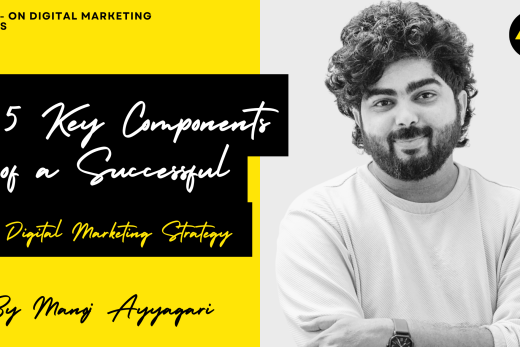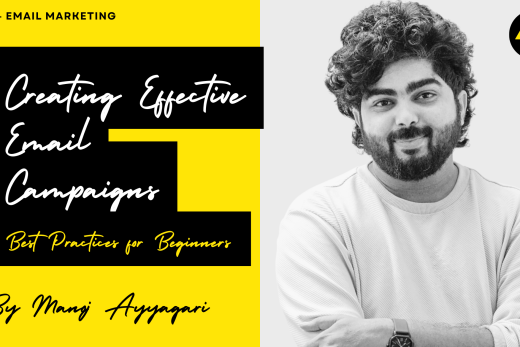If you’ve ever wondered why your content isn’t driving the results you hoped for, chances are you’re only scratching the surface of content marketing.
Content marketing isn’t just writing blogs or posting on social media. It’s a layered strategy made up of multiple content types, each serving a unique purpose across the buyer’s journey. And if you’re only using one or two, you’re leaving money on the table.
I’m Manoj Ayyagari, a Senior Digital Marketer, and after a long career break, I’m back to doing what I love: breaking down marketing in its simplest form. And there’s no better place to restart than with one of my all-time favorite topics: Content Marketing.
In this blog, I’ll walk you through 7 powerful types of content marketing with real-time examples that most businesses ignore but should absolutely be using.
Let’s dive in.
1. Content Writing: Your SEO Engine
This is what most people think of first: blog posts, newsletters, eBooks, etc. But high-quality content writing is more than just putting words together.
Purpose: To educate, inform, and attract through SEO.
Best for: Building long-term organic traffic and trust.

Example:
Neil Patel’s blog (he is the first person who comes to our mind when we hear the word SEO) is a goldmine of SEO content writing. Every blog post is optimized for keywords like “digital marketing trends” or “SEO checklist” and attracts thousands of monthly visitors who later explore his tools or services.
2. Copywriting: Your Silent Salesperson
While content writing builds trust, copywriting is designed to convert. It powers your landing pages, ad headlines, email subject lines, and product descriptions.
Purpose: Get people to take action.
Best for: Sales funnels, ad campaigns, and email marketing.

Example:
Check out Apple’s landing page copy for the iPhone.
No fluff, just clean, benefit-driven lines like “A total powerhouse” or “Battery life that keeps up with you.”
In one campaign I worked on for a coach launching a digital course, rewriting the landing page copy with strong testimonials and emotional triggers doubled the sign-ups in a week.
Forget about Apple. When you search for a how-to video on YouTube, what made you open that video? It’s not about the person, right? It’s about the copy they put on the thumbnail that’s copywriting.
3. Content Curation: Build Authority Without Writing Everything
Content curation involves sharing valuable content from other sources with your insights or opinions layered on top.
Purpose: Show thought leadership and stay visible even when you’re not creating.
Best for: LinkedIn posts, newsletters, or Twitter threads.
Example:
Sahil Bloom, an investor and content creator, regularly shares curated insights from news articles or financial reports and then adds his unique take. This builds authority and encourages sharing without creating every piece from scratch.
I’ll tell you one more simple example: you are doing great in your niche/field, but there’s always a goat in your field. Just share their post on your LinkedIn, you get authority and value without even creating content from scratch.
4. Content Repurposing: Work Smarter, Not Harder
Already created something great? Break it down, remix it, and share it across formats and platforms.
Purpose: Extend the life of your content and reach wider audiences.
Best for: Scaling content without burnout.
Example:
Gary Vaynerchuk’s team is known for this. A 30-minute podcast gets chopped into reels, tweets, carousels, and quote graphics, filling his content calendar for weeks.
Again, forget about GaryVee. I used to admire his work in 2017, when those subtitled videos were a trend. Now you may see podcasts; they do a whole show, but they cut interesting parts of videos into memes, videos, and reels and drive them to the main video. What they are doing is just repurposing their YouTube video in all video forms and channels.
One of my clients, a wellness coach (USA), turned her top-performing blog, “10 Habits for Better Sleep,” into:
- A 5-slide Instagram carousel
- A LinkedIn post
- A YouTube short
- A weekly email tip
That one blog became a month of content, as she is a coach, we use that as a weekly post while doing her personal branding posts.
5. User-Generated Content (UGC): Build Social Proof
UGC refers to content created by your customers or community, like reviews, testimonials, or customer photos.
Purpose: Build trust and credibility through real voices.
Best for: E-commerce, service-based businesses, and coaching.
Example:
Glossier, a beauty brand, features customer photos and reviews on its product pages and Instagram. It creates trust and makes people feel part of a tribe.
If you’re a consultant, asking clients for video testimonials and posting them with a short story can work wonders. I helped a real estate advisor do this, and those clips became their highest-converting ad creatives.
This works for you if you recently started a boutique or nail art studio; instead of hiring models or using AI, gather real user-generated content by asking them for testimonials and use them in ads or emails.
6. Video Content: Your Engagement Magnet
Video content is the most consumed form of content today, whether it’s long-form YouTube videos or short Reels.
Purpose: Educate, entertain, or inspire in an engaging format.
Best for: Social media, sales pages, and YouTube SEO.
Example:
Duolingo uses humor and trends through its reels, keeping the brand top-of-mind. On the flip side, HubSpot’s YouTube channel is a masterclass in educational video marketing.
You don’t need a studio. I worked with, worked for coaches, they just recorded tips and short content using a phone, added subtitles, and used them on LinkedIn, and it built trust instantly.
You don’t need a stage. Just forget stage fear (I’ll even start making videos soon).
7. Thought Leadership Content: Stand Out as an Expert
This is original, opinion-driven content that shares your unique perspective. Think of it as your personal voice in a noisy world.
Purpose: Build authority, trust, and influence.
Best for: LinkedIn, newsletters, Medium, or personal blogs.
Example:
I don’t want to mention names (not able to), but a sales leadership coach, who used the same strategy to build authority and get his calendar filled (of course not in a day; he used to do it for 2 to 3 months)
For me, thought leadership is providing a value through your service. not just promoting it.
Final Thoughts
Content marketing is more than just writing blogs or doing SEO. It’s about using the right type of content in the right place, at the right time, for the right audience.
Whether you’re a coach, consultant, creator, or startup founder, start integrating at least 3 to 4 of these content types into your strategy. You’ll not only increase reach and engagement but also drive conversions and build deeper trust.
Conclusion:
Every piece of content we create is just to share value, not just to create a grid or fill the feed. Identify what type of content your business needs. If you are in a boutique, you need to concentrate more on image and carousels to display each layer of your apparel in each slide you don’t need to focus on infographics.
If you are a coach or a consultant, focus on infographics to share insights/before-and-after comparisons.
Which type of content are you already using?
Which one will you add next?
Share your thoughts in the comments or drop me a message. I’d love to hear what worked for you.
Also read How to Build a Solid Foundation in Digital Marketing here.
Follow me on LinkedIn for quick tips and strategies on digital marketing!




